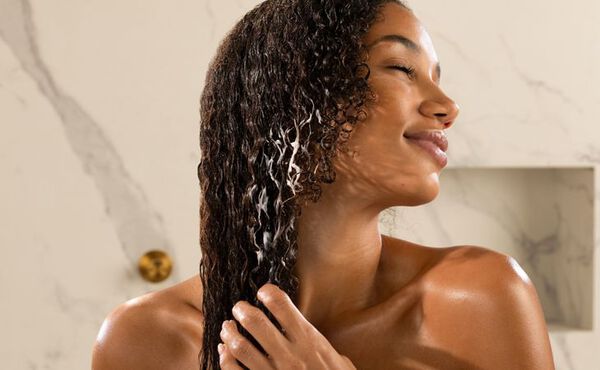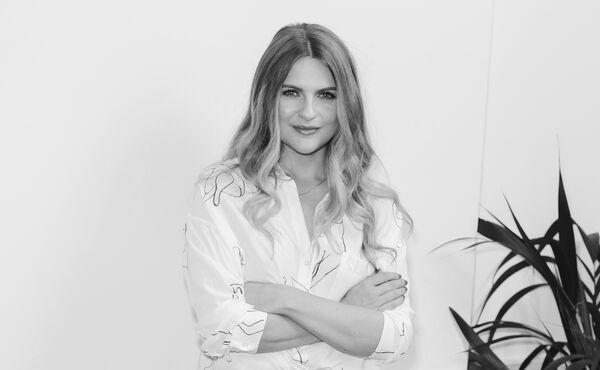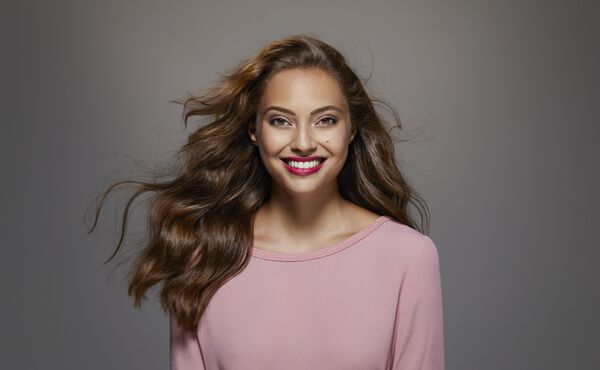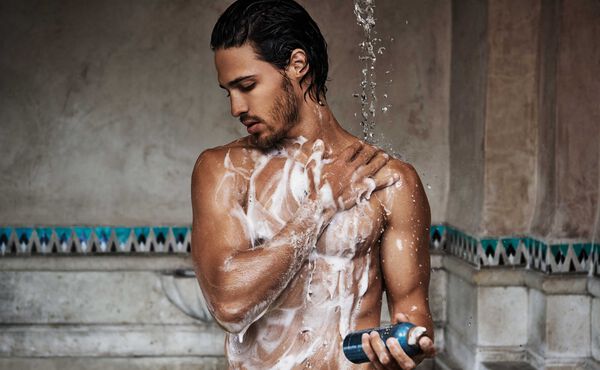Mindegy, milyen a hajszerkezeted, legyen egyenes vagy göndör, nálunk megtalálod azokat a tanácsokat és termékeket, amelyekkel minden napod klassz frizuranap lesz.
A hajunk olyan, mint egy fáradt kisgyerek: hihetetlenül rakoncátlan tud lenni. Figyelmeztetés nélkül képes a legváratlanabb dolgokra, például begöndörödni vagy bezsírosodni. Az egyik pillanatban még csodásan dúsnak hat, másnap pedig olyan lapos, akár a salátalevél. Ahhoz, hogy a lehető legszebb lehessen a hajad, tudnod kell, hogy milyen a hajtípusod, és megadhasd neki azt, amire szüksége van: legyen az megfelelő rutin vagy a számára ideális termékek. Felkértünk 3 fodrászt, hogy osszák meg velünk bevált tippjeiket, amelyekkel a legtöbbet hozhatod ki a hajadból.
A főbb hajtípusok
Mindenkinek másmilyen a haja, legyen szó textúrától, hosszról vagy a hajszálak porozitásáról. A fő hajtípusok ettől függetlenül a következők: vastag szálú, vékony szálú, egyenes, göndör és afro. Természetesen lehetséges, hogy neked vastag vagy vékony szálú, de egyenes a hajad, míg a göndör és az afro haj is sokféle textúrájú lehet a laza hullámoktól a sűrű loknikig. Ha nem tudod biztosan, hogy melyik típusba tartozol, Louis Byrne fodrász azt javasolja, hogy „mosd meg a hajad, fésüld a kívánt formára, legyen az oldal- vagy középválasztékos, majd hagyd magától megszáradni. Miután megszáradt, valós képet kapsz arról, hogy milyen típusú a hajad.”
Ha tényleg fogalmad sincs róla, Andrew Mulvenna fodrász és szalontulajdonos azt tanácsolja, hogy „kérd meg a fodrászodat, hogy elemezze a hajadat. A hajtípusok felismerése alapvető fontosságú mindenhez, amit egy fodrász csinál, így egy jó szakember meg tudja mondani neked.”
A megfelelő vágás
Lehet, hogy te mindent jól csinálsz, ha a hajtípusod kezeléséről és formázásáról van szó, mégis kulcsfontosságú, hogy a hajad jól legyen levágva. „Mindenkinek azt javasolnám, hogy elsőként egy remek hajvágásra költsön, ugyanis minden más ezen alapszik” – mondja Tracie Cant fodrász.
Azonban nincs olyan hajvágás, amelyik mindenkinek megfelel. „Általánosságban igaz az, hogy a vékonyabb szálú hajat strukturáltabbra kell vágni, erősebb vonalakkal, mivel így sűrűbbnek és dúsabbnak fog mutatni – magyarázza Byrne. – A vastagabb szálú haj ellenben egy lazább vágást is elbír.”
Ha göndör vagy afro hajad van, Byrne felhívja a figyelmet arra, hogy a fodrászod ne használjon ritkító ollót vagy borotvát: „ettől csak szállni fog”, ezt pedig senki sem szeretné.
„Fontos, hogy te és a fodrászod megértsétek egymást, és ugyanazt a nyelvet beszéljétek – mondja Byrne. – Vigyél képeket, hogy megmutasd, mit szeretnél, és kérd meg a fodrászt, hogy ő is mutasson neked referenciákat” – teszi hozzá.
Állj a hajadhoz holisztikusan
A jó hajápolási rutin nem csak az általunk alkalmazott termékekről szól: „fontos a minőségi, lehetőleg bio étrend, valamint a sok folyadék. Tényleg az vagy, amit megeszel – mondja Cant. – Az, hogy igazán szépnek érezd magad, sokkal mélyebb annál, mint hogy odafigyelsz a külsődre – egy vibrálás, amely a legbelsőbb lényedből árad. A hajad és a bőröd is azt tükrözi, ami belül létrejön.”
Mulvenna egyetért vele: „A jó haj titka nagyon hasonlít a szép bőréhez. A lényeg a külső és a belső hidratálás egyensúlya. Ha megteremted ezt az egyensúlyt, a hajad nemcsak kezelhetővé válik, hanem egyenesen pazar lesz.”
Lehet, hogy másmilyen hajtípusra vágysz, de a hajjal való elégedettség titka az, hogy elfogadod, amid van. Byrne felhívja rá a figyelmet: „olyannak szeresd a hajad, amilyen, és inkább próbálj javítani a természetes textúráján ahelyett, hogy küzdenél ellene.”
Az, hogy igazán szépnek érezd magad, sokkal mélyebb annál, mint hogy odafigyelsz a külsődre – egy vibrálás, amely a legbelsőbb lényedből árad. A hajad és a bőröd is azt tükrözi, ami belül létrejön.
Találd meg a számodra ideális hajápolási rutint
Ha már ismered a hajtípusodat, a hajformázás is leegyszerűsödik. A szakértők szerint a hajápolás a zuhany alatt, a samponnal és a kondicionálóval kezdődik. Az üzletekben a Rituals személyre szabott szolgáltatást kínál, amelynek során kétféle elixír közül választhatsz, hogy a hajad igényeihez válassz sampont és a kondicionálót, legyen szó akár a göndörség megtartásáról, a fejbőr ápolásáról, a volumenről, a fényes hatásról, vagy valami egészen másról. Összesen 9 féle elixír közül választhatsz, így a hajad igényeinek megfelelően állíthatod össze a formulát. Okos. Hajtípus pipa, sampon és kondicionáló pipa – úgyhogy most görgess le a hajtípusodhoz, hogy megismerhesd a számodra szükséges hajápolási rutint.

Ha vastag szálú a hajad
„A vastag szálú haj általában durvább tapintású és sűrűbb, ami több hidratálást és kondicionálást igényel. Keress kissé nehezebb, olajtartalmú termékeket, amelyek táplálnak, hidratálnak, és szebbé teszik a haj természetes esését és fényét” – mondja Byrne. A 30 Seconds Ultra Shine Hair Mask [Link to new product] segítségével megúszhatod, hogy égnek álljon és szálljon a hajad.
A vastag szálú haj nem igényel napi mosást, de átöblítheted vízzel a zuhany alatt, ha úgy érzed, hogy fel kell frissítened. „Öblítés után vigyél fel rá egy kis öblítést nem igénylő terméket, majd szárítsd meg a hajadat úgy, ahogy szoktad. Vannak, akiknek elég hetente egyszer megmosniuk a vastag szálú hajukat, így náluk tovább kitartanak a termékek. Ha csökkenteni tudod a hajmosások számát, és hagyod, hogy a hajad gyakrabban száradjon meg magától, akkor idővel egészségesebb és könnyebben kezelhető lesz” – mondja Mulvenna.
Ha sietsz, használd a Refreshing Dry Shampoo terméket, hogy felszívja a felesleges zsiradékot a hajtöveknél, és a tisztaság illatát adja a hajnak.
Ha vékony szálú a hajad
„A vékony szálú haj könnyedebb textúrájú termékeket igényel. Ne használj semmilyen olajtartalmú szert, mert elnehezíti és zsíros hatásúvá teszi a hajadat – tanácsolja Byrne. – A vékony szálú hajnak volumennövelő termékekre van szüksége. Ezek könnyűek, de megtartják a hajat.”
Mulvenna azt javasolja, hogy az öblítést nem igénylő kondicionálók és krémek helyett inkább sótartalmú termékeket, például strandpermetet használj. „Ezek dúsabbá és teltebbé teszik a hajat, és megelőzik a zsíros hajtő/töredezett hajvég kombó kialakulását.”
Ha hajszárítóval szárítod a hajad, Mulvenna azt tanácsolja, hogy könnyű kondicionálót válassz, amelyet csak a hajvégekre viszel fel, valamint egy jó hővédő terméket a haj egész felületére.
„A fő szabály a vékony szálú haj esetében az, hogy ne nehezítsük el. A kevesebb mindenképp több” – jegyzi meg Cant.
Ha göndör vagy afro hajad van
A göndör és afro haj más hajtípusokhoz képest sokkal szárazabb, ezért a hidratálására kell helyezned a hangsúlyt. Mulvenna azt javasolja, hogy „mosd meg, kondicionáld, majd, amíg még kellően nedves, sőt majdhogynem vizes, vigyél fel rá egy kis öblítést nem igénylő kondicionálót vagy hajformázó krémet. Ezt fésüld bele a hajba, majd a kezeddel finoman nyomkodd át hosszában végig, hogy kihozza a haj természetes esését. Inkább azt javaslom, hogy hagyd magától megszáradni, semmint hogy diffúzort használj.” Próbáld ki a kókusz- és argánolajat tartalmazó Leave In Ultra Curl Balm terméket.
Byrne azt ajánlja, hogy keress „nehezebb kondicionálókat, amelyek arra szolgálnak, hogy segítsenek kiemelni a haj göndörségét, és ne hagyják szállni a hajat.” Az Intense Nourishing Oil megőrzi a haj simaságát és kondicionált állapotát – nedves hajon vagy száraz hajvégeken is használhatod, hogy simák maradjanak.
Az összes hajtípus közül a göndör és az afro igényli a legkevesebb mosást. Ha száll a hajad, vagy száraznak érzed, mosd át vízzel, és vigyél fel rá öblítést nem igénylő kondicionálót. Emellett mindenképp legyen egy pakolás a hajápoló termékeid között: a Nutrition Hair Mask egészségfokozó olajokkal táplálja a tincseidet. A pakolásokat és kondicionálókat a hajtövektől a hajvégekig alkalmazhatod, csak arra ügyelj, hogy mosd le őket a fejbőrről, hogy ne maradjon rajta olyan termék, ami irritálhatná.
Ha egyenes a hajad
Egyenes haj esetén Byrne megjegyzi, hogy keress „egy jó kondicionálót, hogy sima és fényes legyen a hajad, ezután pedig aszerint kell formáznod, hogy vékony vagy vastag szálú.”
A Keratin Hair Mask regenerálja a haj szerkezetét, véd a töredezett hajvégektől és attól, hogy szálljon, ami a sima hajnál különösen feltűnő. Egy másik lehetőség a 30 Seconds Ultra Shine Mask, amely fényessé és simává varázsolja az egyenes szálakat.
-
Részletek25 €







.jpg?sw=600&sh=370&sm=fit&cx=2314&cy=0&cw=6487&ch=4000&sfrm=jpg)
